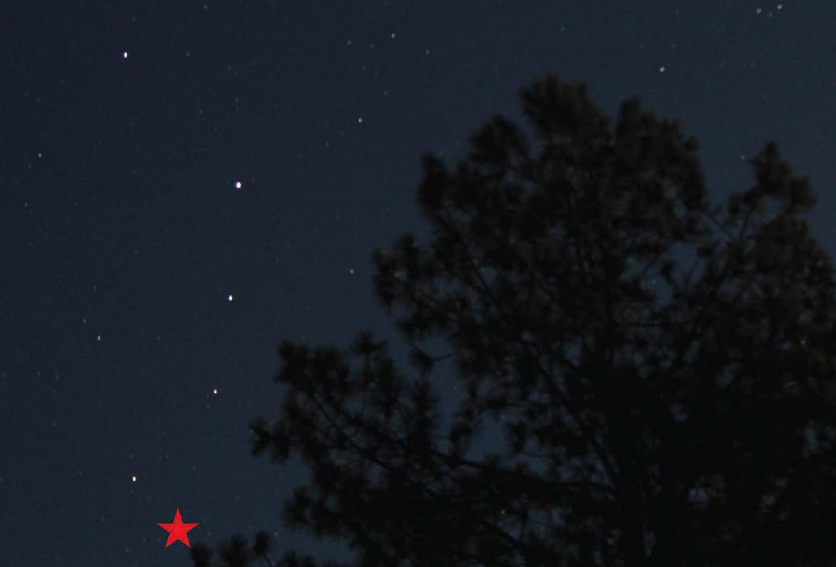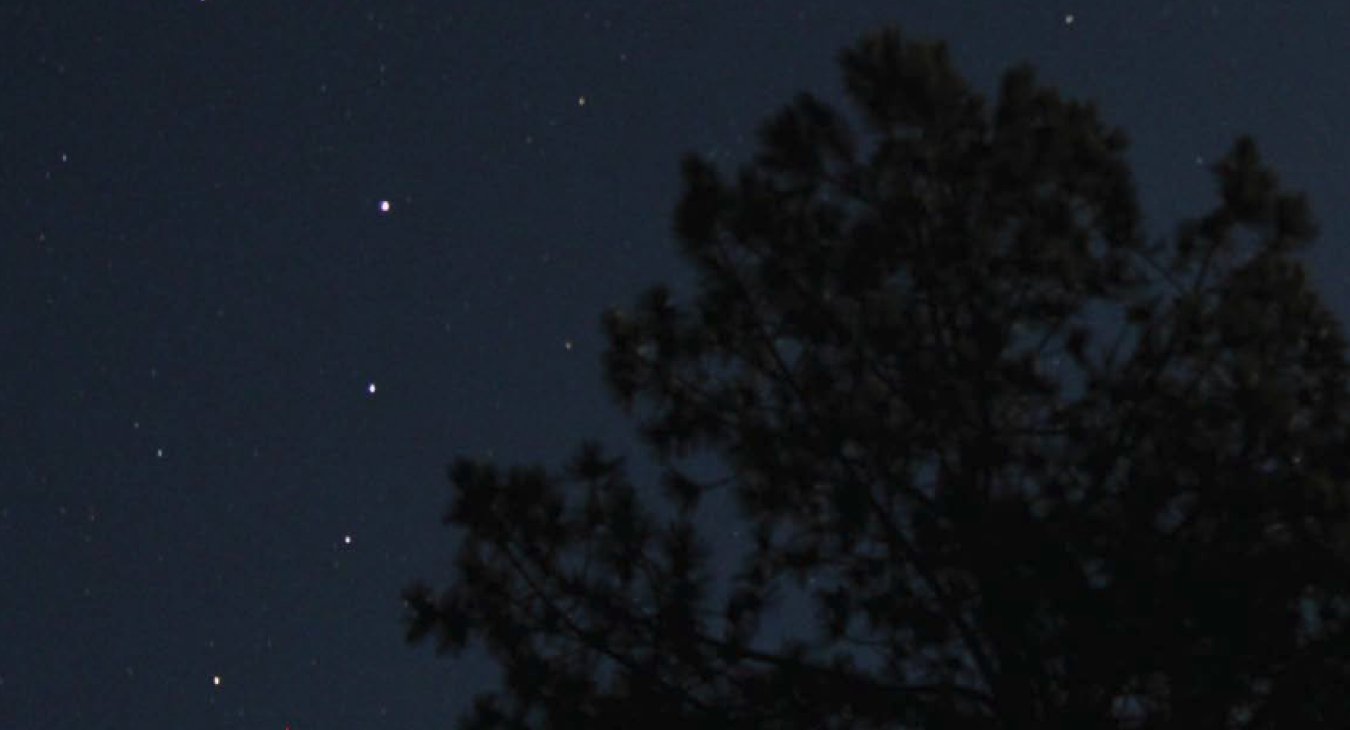The constellation Corona Borealis, known as the Northern Crown, is visible arcing just to the left of the foreground tree. The location of the recurrent nova, T Coronae Borealis, is indicated in red. If/when this star explodes, it may briefly become as bright as Alphecca, the star near the center of the crown's arc and the brightest star in Corona Borealis.
Our evening skies are almost totally devoid of bright planets during May and June. The planetary action has shifted entirely to the morning sky. The first planet to appear is Saturn, well up in the eastern sky during the pre-dawn hours and rising around midnight by the end of June.
Following about one to ours behind is the red planet, Mars, which is gradually climbing higher in our eastern sky. It will be a prominent object in our skies around the end of this year.
The solar system's largest planet, Jupiter, passes on the far side of the sun from Earth in mid-May. It later begins emerging into the morning sky, rising around the beginning of dawn by the end of June. Mercury also puts in an appearance in the morning sky during May, but it remains fairly low in the dawn. As it sinks back to the eastern horizon, it passes close to Jupiter on the morning of June 4, but this conjunction takes place so deep in twilight it will probably not be detectable.
For the past few months, we have been able to view Comet Pons-Brooks in our evening sky. Now, a second comet with a similar orbital period of 70 years, Comet Olbers- which most recently returned in 1956-will be visible low in our northwestern evening sky during May and June. Comet Olbers will probably not become bright enough to detect with the unaided eye, but it should be easily detectable with binoculars.
The constellation Corona Borealis (the Northern Crown), which is currently visible high in our eastern sky during the evening hours to the northeast of the bright star Arcturus, contains a rather unusual star known as T Coronae Borealis. This is what is known as a recurrent nova. It has been seen exploding at approximate intervals of several decades, including as far back as the 13th century. The last two such occasions were in 1866 and 1946. It has recently shown signs of another impending explosion and may do so within the next few months.
If it does, it may briefly become as bright as Polaris (the North Star) and Alphecca, the brightest star in Corona Borealis.


